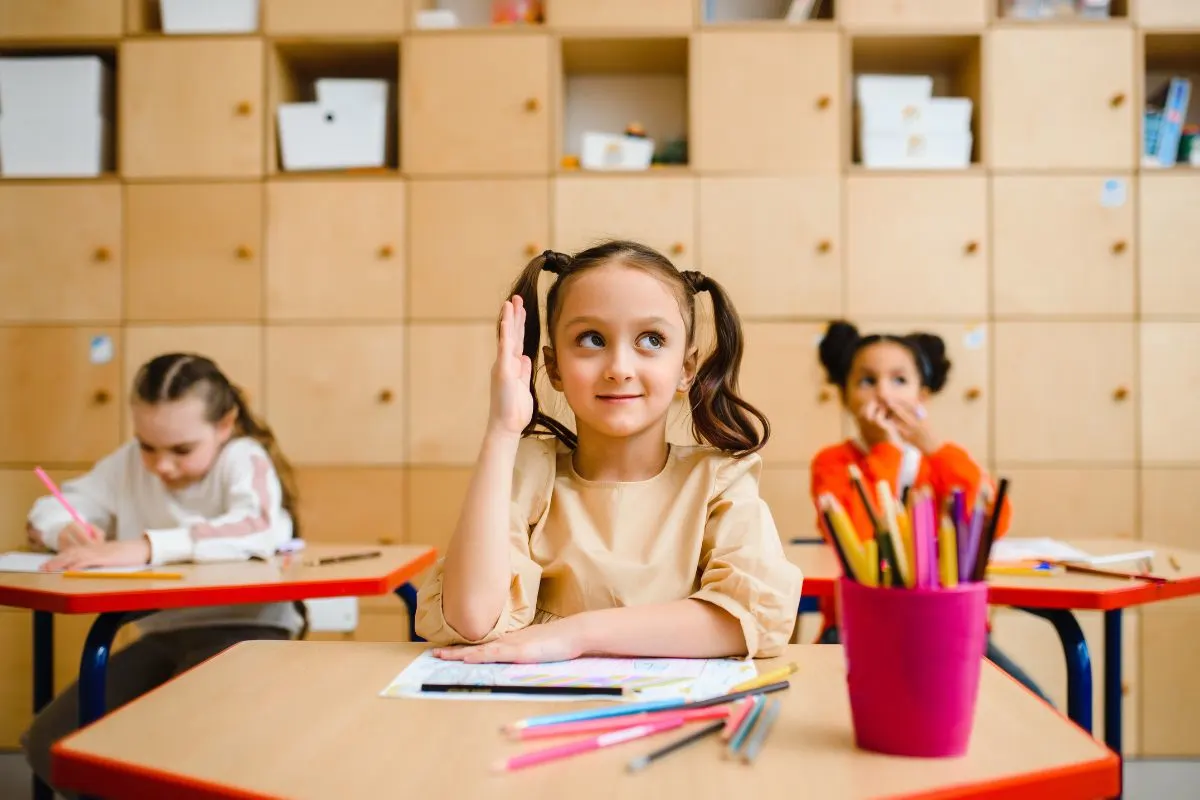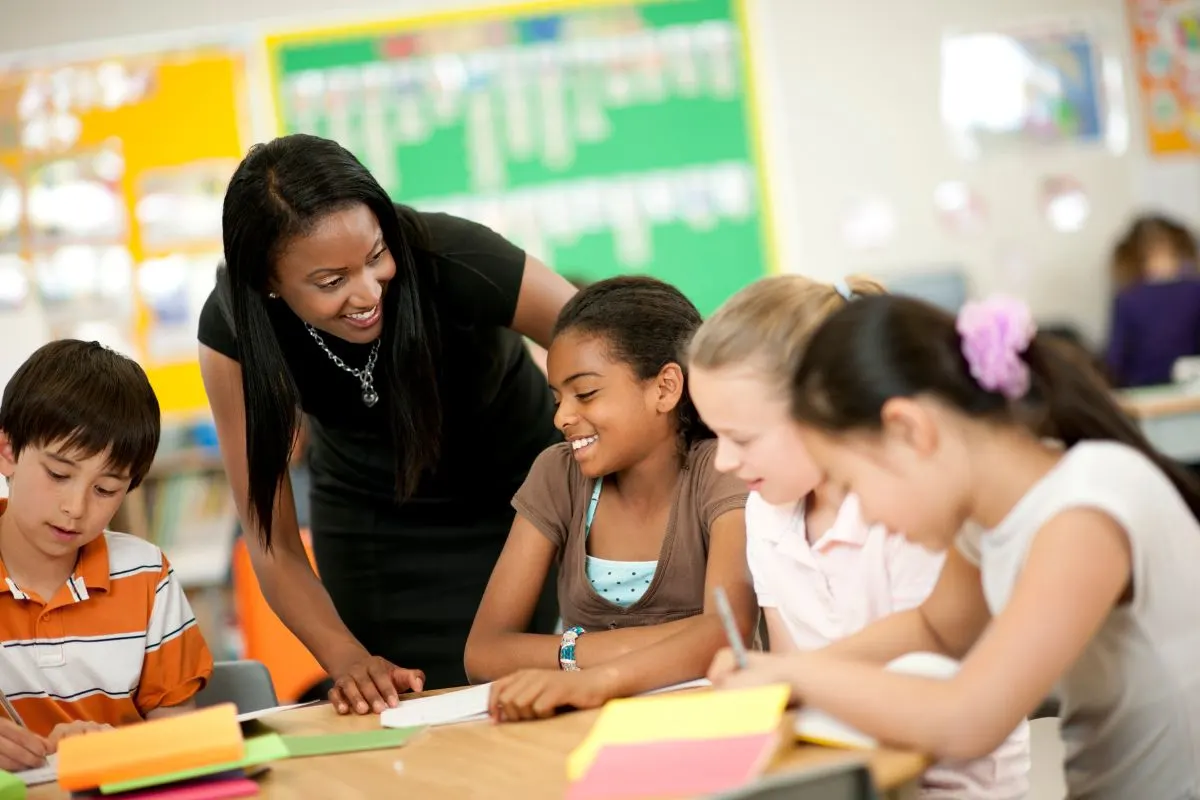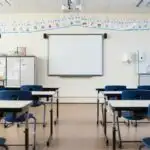Within the contemporary education system, there are numerous ways that teachers are able to engage with their students – utilizing all manner of different resources to create the perfect learning environment wherein both parties can make the most of their situation.

One such method is the classroom seating arrangements – something that might seem trivial, but which has been shown to have a notable impact on the way that children can learn, and the way that teachers can engage with students.
But what are some of the best classroom seating arrangements, and what benefits do they each have?
Can Seating Arrangements Affect Learning?
When it comes to the classroom seating arrangements, there are many ways that it can actually impact the learning experience of the students – both in a negative and positive way.
Be it in terms of paying attention, engaging with content, or making meaningful connections with other students and teachers, there are numerous ways that the seating arrangement within the classroom can have an impact on learning.
How Does The Seating Arrangement Affect Learning?
As mentioned above, there are many ways that the seating arrangement within a classroom can affect the learning experience of the students – and also the teaching experience of the teacher.
Student Engagement
One of the main ways that classroom seating arrangements can affect learning is through student engagement.
This can of course include many different things, but generally speaking, one of the main ways involves whether or not the students can see the teacher, and also whether they can see the board.
With the proper view of the board, and a good eye line with the teacher delivering the lesson, then the students can not only concentrate better, but also remain engaged and up to speed with everything that is being said, and everything that is happening.
Student Behavior
The seating arrangement of the classroom can also have an impact on student behavior – i.e. if the students are not in the eye line of the teacher, then they are potentially more able to mess around, get distracted on other things, or otherwise be doing other things rather than their work.
On the other hand, if they can see the teacher, and the teacher can see them (as much as possible) then good behavior is more likely to reign supreme within the classroom, and students will potentially feel less inclined to cause disruptions or stop focusing on their work.
Teacher-Student Connection
Of course, one of the most important aspects of modern teaching is the connection between the students and their teacher.
This connection is forged through the students paying attention, the teacher feeling like they have full attention, and the students feeling like they are noticed – not to mention that their opinions and input are valued.
With proper seating arrangements, this can be achieved, and teachers and students can engage with one another in an effective and appropriate way.
Help, Care & Attention
The proper seating arrangement also enables the proper amount of care, help, and attention to be delivered to those that need it the most.
Especially in larger class groups, it can often be easy for students to slip through the cracks – especially those who are more introverted, less confident, or otherwise less likely to verbally ask for help.
However, with the proper seating arrangement, students can get the help they need, and the teacher can make more accurate assessments of who needs their help, and who has a handle on their class work.
What Possible Seating Arrangements Are There?
Of course, when we talk about the possible seating arrangements that a teacher might want to instill, there are only so many ways and arrangements that this can occur – especially with limited classroom space, and larger numbers of students.
However, the arrangements still do exist, and they each have their own benefits.
Rows
One of the most common and traditional classroom arrangements is to have the students sat in rows running widthwise across the classroom.
This is especially beneficial if there are large numbers of children – or indeed large numbers of tables and desks – and it means you can easily fit in everyone who needs to be there.
Pairs
Another way for students to be arranged in the classroom is for them to be sat together in pairs.
This is obviously good for grouped work, where students will need to work with a partner, or otherwise engage with the people around them, and is a good way of fostering a sense of camaraderie amongst the students.
This could also consist of two people sharing a two-seater desk, or indeed four people sharing two desks pushed together – and either way can be a good way of breaking up the students into manageable groups, and ensuring that larger groups cannot cause problems, and that everyone has access to the help they need.
Table Groups
Another common method for arranging classroom seating is to have the students sat in table groups.
This generally consists of two or more tables pushed together to form a square, with the students then sitting around the outside facing one another.
This means that group work can function better, but does have the disadvantage that most of the students are not actually facing the front of the class where the teacher will probably be standing.
U-Shaped/Double Horseshoe

Another common way for students to be arranged in the classroom is by establishing a u-shaped seating pattern.
This is where the tables are aligned in a u-shape along the wall, with everyone facing the board and the teacher at the front of the class.
This is a common and popular method, and has the advantage of allowing the teacher to see everyone in the classroom at the same time.
This also means that students are less inclined to procrastinate or daydream, that bad behavior can be kept at a minimum, and that those who need help can easily access it when they need it.
Similar to this method is the double horseshoe arrangement – which involves two rows of u-shaped seating patterns sat one behind the other.
This has its share of pros and cons, but is another popularly used arrangement.
The Pros & Cons Of Rowed Seating
Each method of seating arrangement has their pros and cons – with rowed seating being no exception.
What Are The Pros?
One of the main pros of rowed seating is that the setup is perfect when group and paired work is not expected.
This means that the students can remain where they are sat, and that tables do not need to be moved or rearranged for group work.
Another benefit is that – should paired work be necessary – then the students can work with their person next to them.
Of course, the main benefit of rowed seating arrangements is that all of the students are facing the teacher and the board.
This means that procrastination and bad behavior are less likely, that talking should be to a minimum, and that the majority of the students can be engaged and focused.
What Are The Cons?
The main downside of rowed seating is that it makes it harder for the teacher to come over to the students further back down the room.
This is especially the case if the room is not large, and there are a lot of students crammed into a relatively small space.
This obviously puts somewhat of a boundary between the students and the teacher, which would mean reduced engagement between the two, and a feeling of disconnect that could result in worsening work quality, reduced interest and focus, and even lower grades on the whole.
They are also not useful for group work and communal activities – which means that classes that require a lot of said working patterns and activities would do well to avoid this.
Another downside is that, overall, the teacher cannot see what all of the students are doing – at least not on their desks – which can lead to a degradation in quality and focus overall.
The Pros & Cons Of Paired Seating
There are also numerous pros and cons when it comes to paired seating too – all of which hold importance depending on the type of class.
What Are The Pros?
The pros of paired seating are numerous, but the primary one is that it is easy for the teacher to focus on the students – as they are not grouped in large numbers.
This leads to more engagement between student and teacher, and greater focus overall.
Another benefit is that it allows the teacher to see what the students are up to, and whether or not they are concentrating on their work or not.
This is obviously important when it comes to maintaining high quality, ensuring continued focus, and making sure bad behavior remains at a minimum.
The paired seating arrangement is also conducive for paired studying and work in smaller groups, and is a great way of encouraging small levels of conversation without the children getting distracted, or the conversations becoming too muddled and out of hand.
What Are The Cons?
Of course, there are also some cons to paired seating – all of which are important to bear in mind when organizing your classroom.
The main downside relates to talking – something that makes paired seating a double edged sword.
When there are numerous little conversations happening within the classroom it can be difficult to maintain order, focus, and limit bad behaviors – especially if the particular student is disruptive.
However, one way to remedy this is to separate students who are friends, and to sit students next to people they do not know as well, or who they are less likely to cause problems with.
Depending on the size of the classroom, this seating arrangement can also take up more space – which is often a luxury most teachers do not have within their own teaching classrooms.
The Pros & Cons Of Table Groups
When it comes to table groups, there are also many pros and cons that can be associated with this style.
What Are The Pros?
When it comes to the table groups seating arrangement, there are numerous benefits that are worth taking note of.
Firstly, it should go without saying that this method makes group work much easier – allowing already arranged groups of students to easily interact with one another and share ideas in a more fluid manner.
This is also great for large groups of students, especially when the classroom space is smaller.
This is also a great way of breaking up larger groups, and ensuring that groups of students can all get the attention they need and deserve.
This is also a great way of grouping students together who compliment one another – something that is important to not only ensure continued focus and concentration, but also to ensure that they help and raise one another up to reach their full potential.
As such, this method can be better suited to teachers who are familiar with their students’ personalities, as it allows for more informed groupings.
What Are The Cons?

Of course, there are also some downsides, with the main one being that this improved group learning arrangement means that talking remains rife and disruptive.
This is influenced on one part by the fact that the students are all sitting facing one another – something that can make disruptions and distractions much easier.
It is also not helped by the fact that the students are not facing the teacher (at least not organically), which means they either need to turn their chair to face them, or turn their heads.
It also means that it becomes too difficult for the teacher to properly engage with the students, and that many could fall through the cracks – leading to them becoming distracted, disrupted, or otherwise unengaged.
The Pros & Cons Of U-Shaped/Double Horseshoe Arrangements
The u-shaped arrangement is a popular method, but there are both pros and cons associated with this layout.
What Are The Pros?
When it comes to the benefits associated with this seating arrangement, there are many that are worth taking note of.
Firstly, the teacher can see all of the students – both their faces, and the desks in front of them.
This means that it is easier for the teacher to see when people are not paying attention, or otherwise doing something they should not be doing.
It also means that the students can see the teacher – regardless of where they are sitting.
This means that no one will feel left out, disconnected, or otherwise unengaged with the lesson that is taking place.
Another benefit is that teachers can also ensure that bad pairings of students are sat away from another – and are unable to distract one another – and that those who need a little more help and attention can get it without issue.
What Are The Cons?
Of course, there are also some cons – with the main one being that this method requires plenty of space, which is something that most classrooms simply do not have.
This means that it only really works in larger rooms, and that there are better ways to make the most of the space if you are limited on room size.
This is especially true when you are using a double horseshoe shape – two u-shaped arrangements within one another.
This takes up way too much space, and can actually make it easier for students to become distracted – especially if the people behind them are being disruptive.
The double horseshoe arrangement also means that the teacher cannot see what the students behind are doing at their desks.
For this reason, the singular u-shaped method is far superior to the double horseshoe.
Another problem with the double horseshoe arrangement is that the teacher cannot always access the desks of the students on the outer row – especially if there is limited room in the classroom.
So, Which Is The Best?
This is obviously a question that is very context dependent, and it is often the case that a specific arrangement can be beneficial in one instance, and then completely unsuitable in another.
However, there are ways to determine which arrangement will suit you best.
Firstly, if you have sufficient space, the table method or the u-shaped method are both viable, as they provide the right combination of partnerships and separation.
However, if you classroom is smaller, then the rowed and paired method are more suitable.
Secondly, if you are teaching a classroom that is focused on individual learning, then you would be better off using the rowed and paired methods.
On the other hand, if your class requires a lot of group work and interchanging of ideas, then the table groups and u-shaped methods are most effective.
Which Is The Worst?
While this is also subjective, it is fair to say that the stand out worst seating arrangement has to be the double horseshoe method.
This is because it is harder to engage with students, easier for them to become distracted, and doesn’t offer the prospect of group work.
It also means that students on the back row can get away with doing less than those at the front.
Final Thoughts
And there we have it, everything you need to know about classroom seating arrangements, and the best methods to employ for you and your students.
It is certainly true that, within teaching and learning, there are many different approaches you can take – not to mention numerous factors that can affect the efficacy of the learning taking place.
However, as this article highlights, there are some tips and tricks to make things run smoothly and effectively.
So if you are looking for the best classroom seating arrangement for your students, then be sure to give some of these methods a try. Something tells me you won’t be disappointed!
Frequently Asked Questions
Now that we know a little more about classroom seating arrangements, and the impact they can have on learning and teaching, it is now time for us to answer some frequently asked questions that you might be interested in.
Is There A Wrong Way?
Generally speaking, the seating arrangement of your classroom should be done in a way that benefits both yourself and the students.
As such, it could be argued that there is not a ‘wrong’ way per se – although some work better than others.
Does Seating Arrangement Really Affect Engagement?
As this article shows, seating arrangements can impact the level of engagement that students feel – and the connection between educators and the students as a whole.
- Homeschooling In High School: Pros And Cons - February 24, 2024
- How Do I Withdraw My Child From School To Homeschool? - February 23, 2024
- How To Not Go Crazy Homeschooling Kids: A Guide For Frazzled Parents - February 22, 2024









Leave a comment